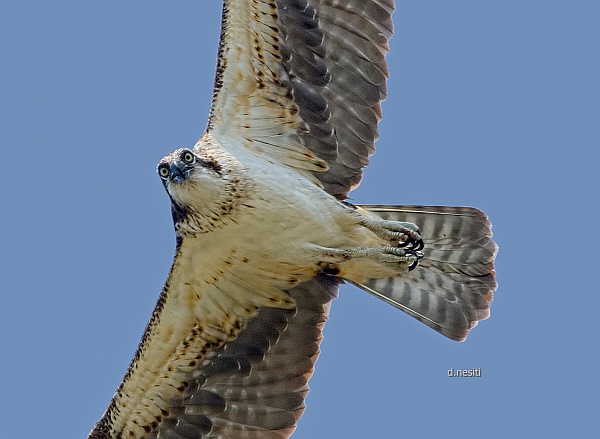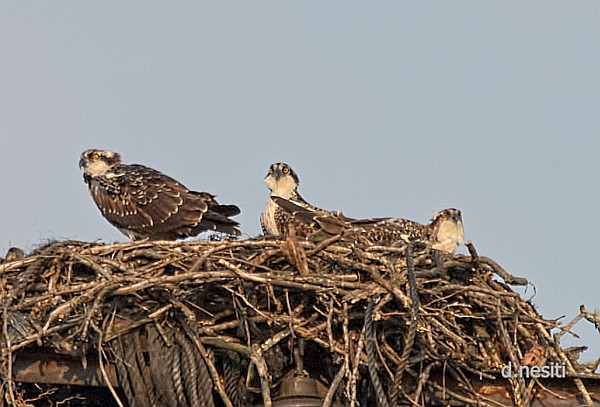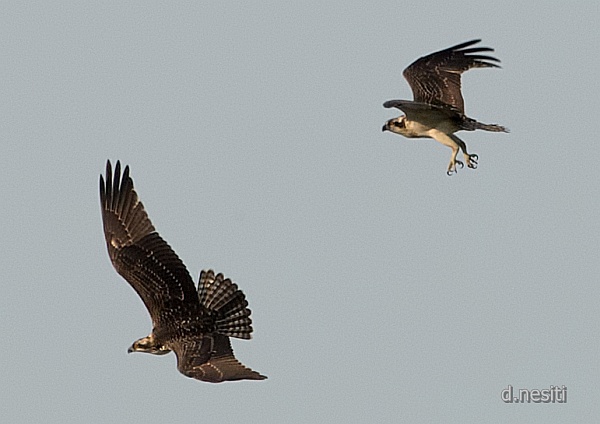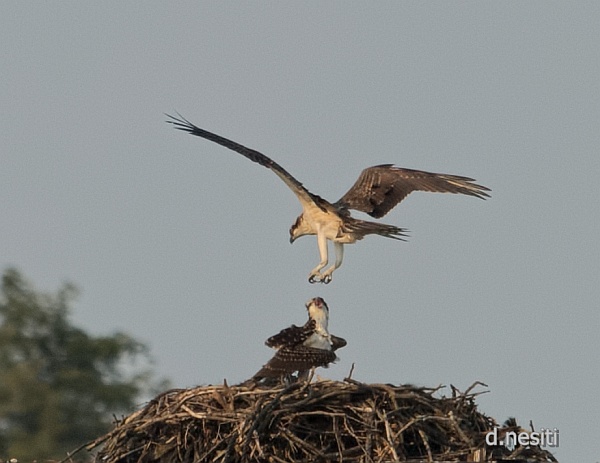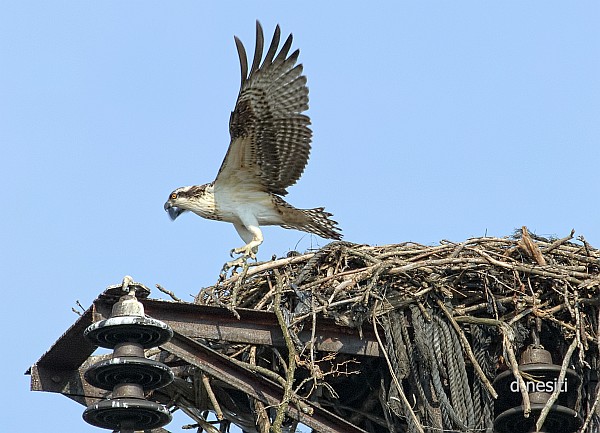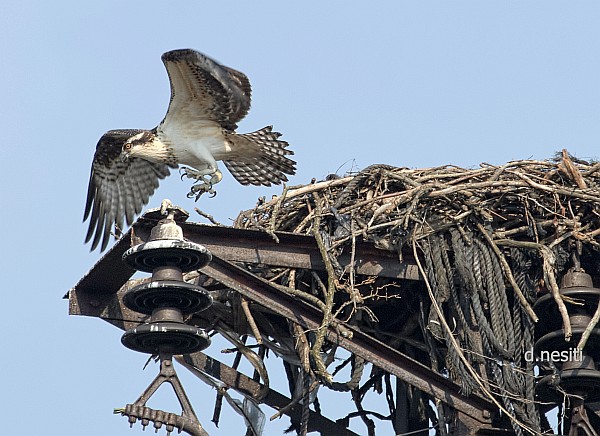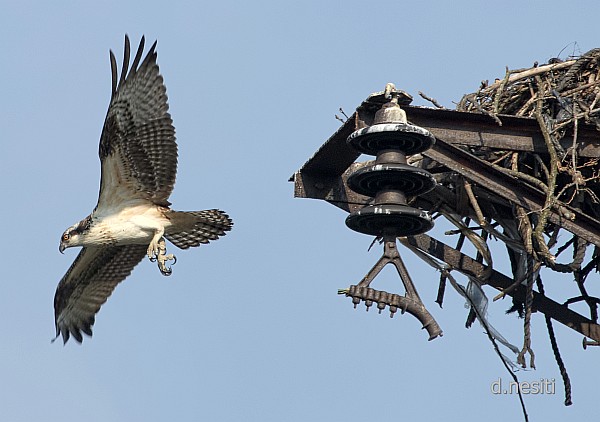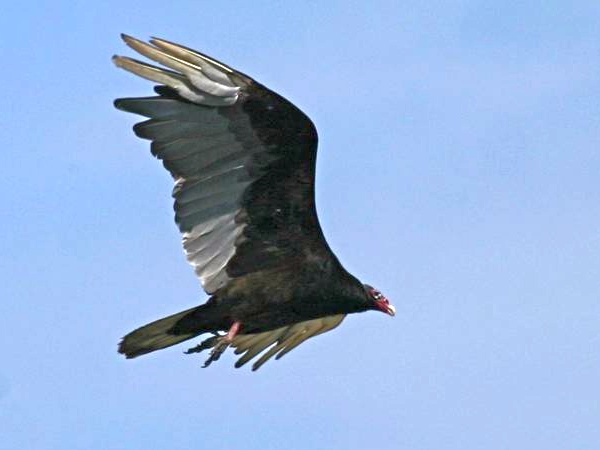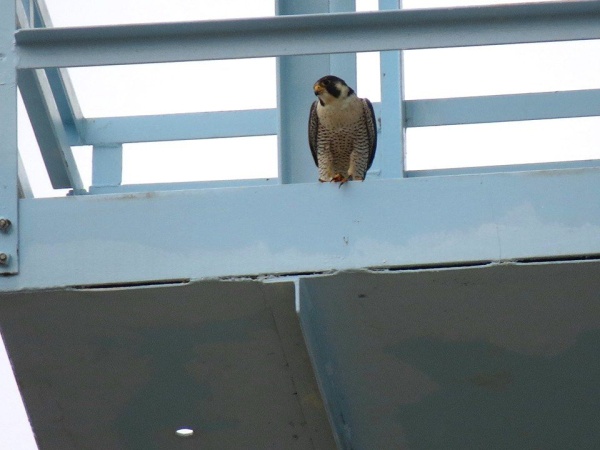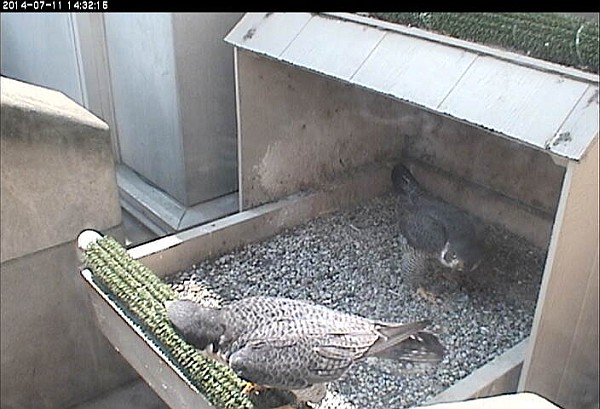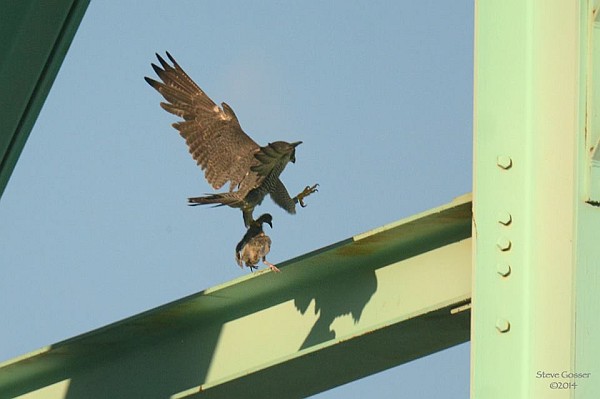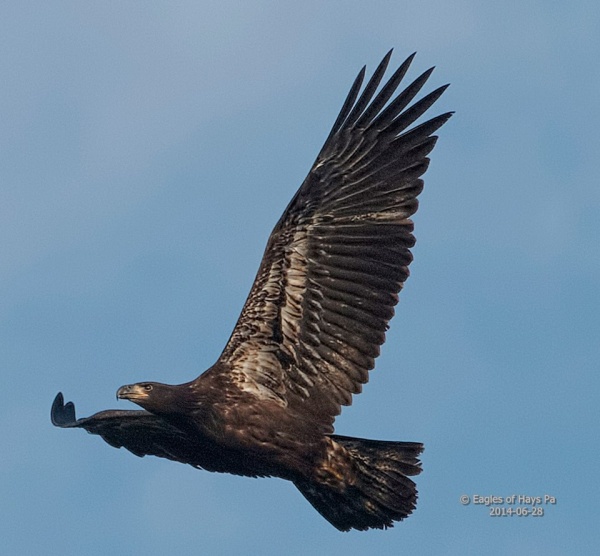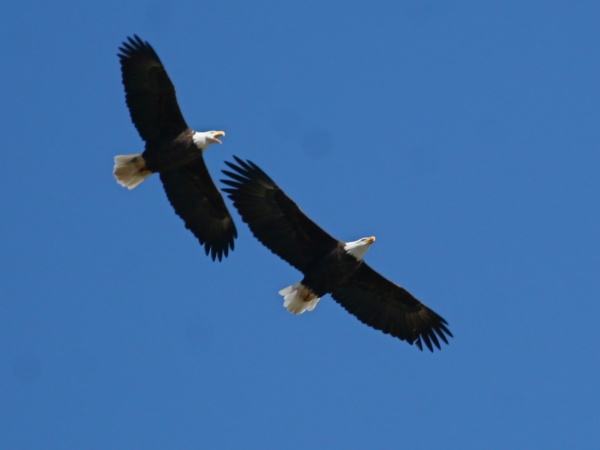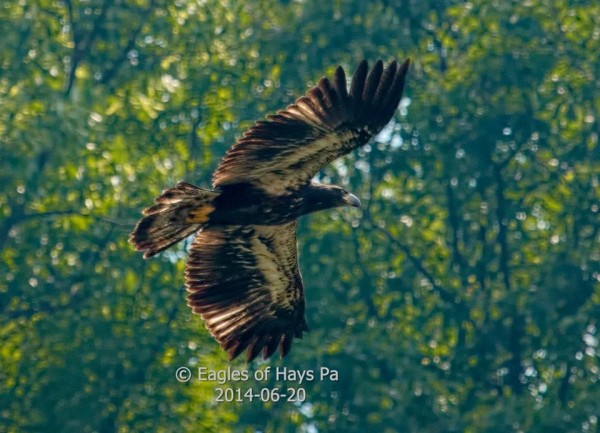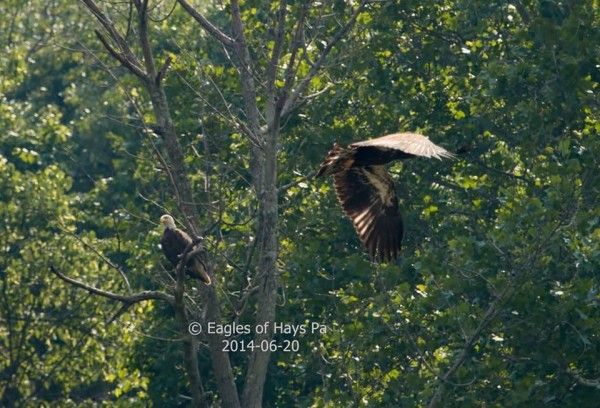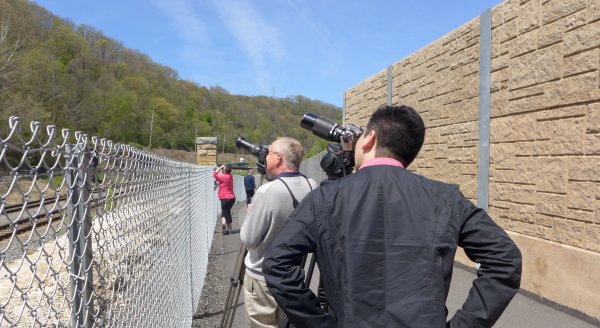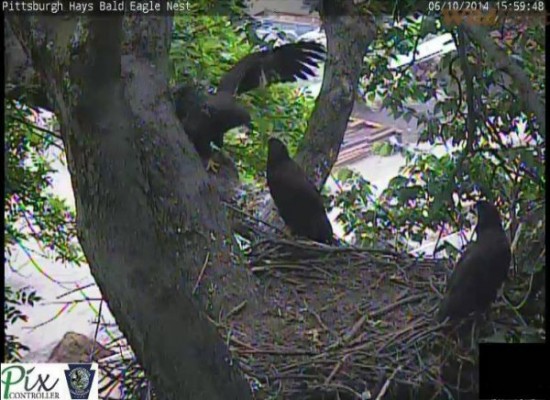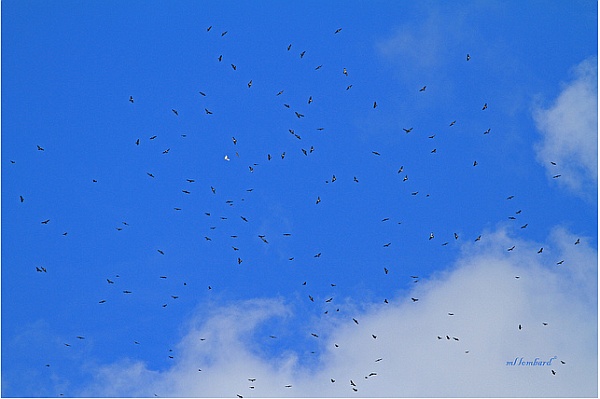
Every dot is a hawk. Can you count them? Better yet, can you identify them?
Pennsylvania’s hawk watches see their highest daily counts this month. On a busy day the sky looks like the photo above, taken by Meredith Lombard at Kittatinny Ridge in September 2011.
Experts can tell you these are broad-winged hawks — except perhaps that white one — but you can accurately guess the species if you know the month and location of the photo. Broad-winged hawks pass through our state in record numbers in mid September.
Up close they look like this. Not so blurry. Actually a bit colorful.
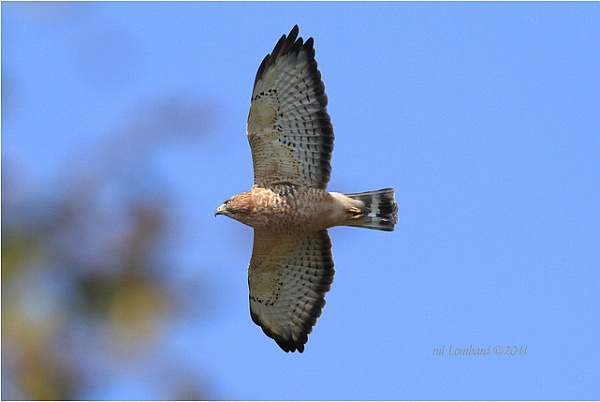
Why are there so many of them? Broad-wings are woodland hawks. What’s the most common and widest-ranging habitat north of here? Woods.
By the third week in September the bulk of broad-wings has passed by. The Allegheny Front Hawk Watch had its highest daily total of 1,880 birds on September 14. Hawk Mountain saw 975 on September 15 and Waggoner’s Gap saw 1,333 hawks on September 16. None of the sites have seen higher counts since but never fear, great birds are still on the way. The Allegheny Front will make up for quantity with quality when the golden eagles come through in November.
Where are the broad-wings now? More than 80 hawk watch sites report in daily at Hawkcount.org where you can find a snapshot of the totals on the home page (scroll down). Drill into the sites with the highest counts and you’re likely to find the broad-wings.
Last week’s winner was…
Detroit River Hawk Watch in Brownstone, Michigan where there were incredible numbers: 39,720 on September 18, 53,055 on September 17 and 68,655 on September 16 (68,193 broad-wings!). The site is flat (no mountain, no cliff) but southbound hawks have to cross the Detroit River somewhere and this is it.
Check out the counts at Corpus Christi, Texas. Some of the broad-wings are already there.
(photos by Meredith Lombard)

